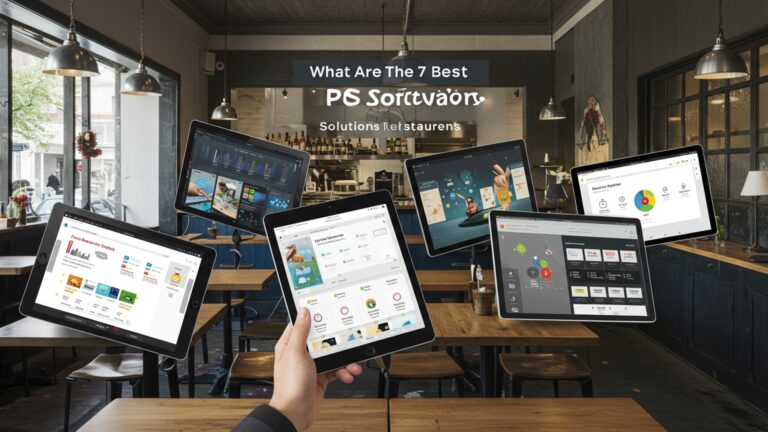7 Essential Steps to Master Clothing Inventory Management Systems
The dynamic world of fashion retail, marked by rapid trend cycles, diverse SKU proliferation. the complexities of omnichannel fulfillment, demands more than just basic stock-keeping. Retailers frequently grapple with the costly inefficiencies of stockouts on bestsellers and the capital drain of overstock, issues exacerbated by the rise of e-commerce and demanding consumer expectations for immediate availability. Mastering a robust clothing inventory management system transforms these challenges into strategic advantages, enabling precise demand forecasting, minimizing deadstock from seasonal shifts. supporting sustainable practices by reducing waste. It leverages real-time data and predictive analytics to optimize everything from warehouse allocation to seamless online-to-store pick-up, ensuring profitability and customer satisfaction in a fiercely competitive market.

1. Grasping the Core: What is a Clothing Inventory Management System?
At its heart, a clothing inventory management system is a structured approach and often a specialized software solution designed to track, organize. manage a retail or wholesale business’s stock of apparel items. For anyone dealing with clothing – from a small boutique to a large e-commerce fashion brand – understanding and mastering this system is not just an advantage, it’s a necessity for survival and growth. It encompasses everything from receiving new shipments to fulfilling customer orders and handling returns.
The primary goal is to ensure the right products are in the right place at the right time, minimizing costly overstocking (dead stock) and frustrating stockouts (lost sales). In the fast-paced fashion industry, where trends shift rapidly and seasonality plays a huge role, an efficient clothing inventory management system acts as the backbone of operational success.
Key terms you’ll encounter:
- SKU (Stock Keeping Unit)
- Inventory Turnover
- Dead Stock
- Point of Sale (POS)
- ERP (Enterprise Resource Planning)
A unique identification number used to track products. For clothing, this often includes variations like size, color. style. For example, a “Men’s T-Shirt, Blue, Large” would have a distinct SKU.
A ratio showing how many times inventory is sold and replaced over a period. High turnover is generally good in fashion.
Inventory that has not sold or is unlikely to sell. A major drain on resources for clothing businesses.
The system where sales transactions are completed. Modern clothing inventory management systems integrate directly with POS to update stock levels in real-time.
A suite of integrated software applications that a business can use to manage daily business activities, including inventory, accounting, project management. manufacturing.
2. Step 1: Conduct a Thorough Initial Inventory Audit
Before you can effectively manage your clothing inventory, you need to know exactly what you have. This foundational step involves a comprehensive physical count of all your existing stock. It’s akin to taking a deep breath before a marathon – essential for setting a baseline.
Without an accurate starting point, any subsequent data from your clothing inventory management system will be flawed. This audit helps identify discrepancies between your records (if any) and actual physical stock, pinpointing potential issues like missing items, data entry errors, or even theft.
- Plan meticulously
- Organize your space
- Use consistent methods
- Categorize meticulously
- Document everything
Decide on a specific date and time, ideally during off-hours to minimize disruption.
Ensure all items are neatly arranged and easily accessible.
Employ count sheets or handheld scanners to record every item, including size, color, style. location. Double-counting or team counting can enhance accuracy.
Group similar items. For clothing, this means sorting by product type (dresses, shirts, pants), then by style, size. color.
Note any damaged goods, items needing repair, or unidentifiable stock.
Dedicate the necessary resources to this initial audit. It’s the bedrock upon which your entire clothing inventory management system will be built. Think of it as a deep clean for your stockroom – messy at first. incredibly rewarding for long-term clarity.
3. Step 2: Choose and Implement the Right Tracking Technology
Once you know what you have, the next step is to select and deploy the tools that will continuously track your inventory. This is where a modern clothing inventory management system truly shines, moving beyond manual logbooks to real-time, accurate data.
Initially, some small businesses might use spreadsheets (like Excel) for inventory. While low-cost, this is prone to human error, lacks real-time updates. becomes unmanageable as stock grows. Automated systems, on the other hand, use technology to record movements automatically.
| Feature | Manual (Spreadsheet) | Automated (Software) |
|---|---|---|
| Cost | Low initial | Higher initial/subscription |
| Accuracy | Prone to human error | High, minimal error |
| Real-time Data | No, requires constant updates | Yes, instant updates |
| Scalability | Poor, complex with growth | Excellent, handles large volumes |
| Reporting | Basic, time-consuming | Advanced, automated insights |
| Integration | None | POS, eCommerce, ERP |
For automated tracking, barcodes and RFID (Radio Frequency Identification) are the two primary methods.
- Barcodes
- RFID
These are visual, machine-readable representations of data. A scanner reads the black and white lines to identify a product’s SKU. They are affordable and widely adopted.
This technology uses radio waves to identify and track tags attached to objects. An RFID reader can scan multiple tags simultaneously from a distance, without line of sight. This is a game-changer for clothing inventory, allowing for faster stock counts and more efficient receiving.
A hypothetical example: “Fashion Forward Boutique” upgraded from manual spreadsheets to a cloud-based clothing inventory management system with barcode scanners. Their receiving time for new shipments dropped by 60%. their monthly stock audit time decreased by 75%, virtually eliminating stock discrepancies that previously plagued them.
Invest in a dedicated clothing inventory management system that integrates with barcode or, ideally, RFID technology. For clothing, RFID offers unparalleled efficiency, though it comes at a higher initial cost. Evaluate your budget and volume to determine the best fit.
4. Step 3: Establish Streamlined Inventory Control Procedures
Having the technology is only half the battle; you need clear, consistent procedures for how inventory is handled at every stage. This ensures your data remains accurate and operations run smoothly within your clothing inventory management system.
- Receiving
- Storage
- Picking and Packing
- Transfers
When new stock arrives, it must be accurately counted against the purchase order, inspected for damage. then immediately recorded in your clothing inventory management system. Each item should be tagged with its SKU (barcode or RFID).
Develop a logical storage system. Organize items by type, size. color. Use clear labeling for shelves and bins. Implement a “first-in, first-out” (FIFO) system, especially for seasonal or trend-sensitive clothing, to minimize dead stock.
Define a clear process for retrieving items from storage for orders. This might involve optimized pick paths or zone picking. Each item should be scanned out of inventory as it’s picked and scanned again when packed for shipment.
If you have multiple locations (e. g. , a physical store and a warehouse, or multiple stores), establish robust procedures for transferring stock between them, ensuring each movement is recorded in the system.
Consider the example of “Urban Threads,” a multi-store retailer. By implementing strict receiving and transfer protocols within their clothing inventory management system, they reduced inter-store stock discrepancies by 90% and improved their overall stock visibility across all locations, allowing them to fulfill online orders from the closest available store.
Document every inventory-related process in detail. Train your staff thoroughly on these procedures and enforce them consistently. Regular audits (see Step 6) will help ensure adherence and identify areas for improvement.
5. Step 4: Harness Data Analytics for Smart Decisions
A powerful clothing inventory management system collects a wealth of data. The real mastery comes from analyzing this data to make informed decisions about purchasing, pricing. promotions. This moves you from reactive stock management to proactive strategic planning.
- Demand Forecasting
- Identifying Fast-Moving vs. Slow-Moving Items
- Optimizing Reorder Points
- Understanding Customer Preferences
review historical sales data, seasonal trends, marketing campaign impacts. even external factors (e. g. , weather forecasts for outerwear) to predict future demand. This helps you order the right quantities at the right time.
Pinpoint which styles, sizes, or colors are selling quickly and which are becoming dead stock. This informs reordering strategies and clearance sales.
Set automated alerts within your clothing inventory management system when stock levels hit a predefined minimum, triggering a reorder to prevent stockouts.
Data can reveal popular color palettes, preferred fabrics, or trending silhouettes, guiding your buying decisions for future collections.
Many systems offer advanced reporting. For example, to identify dead stock, you might run a report like this:
SELECT SKU, ProductName, SUM(QuantitySold) AS TotalSoldLast12Months, CurrentStockLevel
FROM InventorySalesData
WHERE LastSaleDate < DATE_SUB(CURDATE(), INTERVAL 6 MONTH) AND CurrentStockLevel > 0
GROUP BY SKU, ProductName
ORDER BY CurrentStockLevel DESC;
This hypothetical SQL query would help identify items that haven’t sold in the last six months but still have stock, indicating potential dead stock.
Regularly extract and assess the reports generated by your clothing inventory management system. Don’t just look at the numbers; use them to ask “why” and “what next?” This data-driven approach is key to profitable inventory management.
6. Step 5: Integrate Your System for Seamless Operations
For a truly mastered clothing inventory management system, it shouldn’t operate in a silo. Integrating it with other critical business systems ensures data consistency, reduces manual effort. provides a holistic view of your operations.
- Point of Sale (POS) System
- E-commerce Platform
- ERP (Enterprise Resource Planning) System
- Supply Chain Management (SCM) Tools
- Shipping and Fulfillment Software
This is paramount. Every sale at the register should instantly update your inventory levels, preventing overselling and ensuring accurate stock counts.
If you sell online, your website’s inventory should be synchronized in real-time with your physical stock. This prevents customers from ordering items that are out of stock and vice-versa.
For larger businesses, integrating with an ERP system connects inventory with accounting, purchasing. potentially manufacturing modules, offering a comprehensive operational overview.
Integration with supplier systems can automate purchase orders, track incoming shipments. provide better visibility into your supply chain.
Automatically transfer order details and updated inventory status to your shipping partners for faster, more accurate fulfillment.
For instance, “Global Garb,” an online fashion retailer, integrated their clothing inventory management system with their Shopify e-commerce store and their fulfillment partner. When a customer buys a dress online, the inventory is immediately decremented, the order is sent directly to the warehouse for picking. the shipping label is generated, all without manual intervention. This dramatically reduced order processing time and error rates.
Prioritize integration when selecting or upgrading your clothing inventory management system. Look for platforms that offer robust APIs (Application Programming Interfaces) or pre-built connectors to your existing business tools. This creates a powerful, interconnected ecosystem.
7. Step 6: Implement Regular Audits and Reconciliation
Even with the most advanced clothing inventory management system and stringent procedures, discrepancies can occur. Regular checks are essential to ensure your digital records accurately reflect your physical stock. This process is known as reconciliation.
- Physical Inventory Count
- Cycle Counting
This is a full count of all inventory at a specific time, similar to your initial audit (Step 1). It’s comprehensive but highly disruptive and labor-intensive, often done annually.
A more efficient, less disruptive method where a small, specific section of inventory is counted on a rotational basis. For example, you might count all “blue dresses” one week. all “men’s large shirts” the next. This allows for continuous verification and problem-solving without shutting down operations.
| Feature | Physical Inventory Count | Cycle Counting |
|---|---|---|
| Frequency | Typically annually | Ongoing, daily/weekly |
| Disruption | High, often requires shutdown | Low, operations continue |
| Resource Intensity | Very high (staff, time) | Lower, spread out |
| Problem Identification | Retrospective, large-scale | Proactive, small-scale, continuous |
| Data Accuracy Impact | Large, infrequent correction | Continuous, incremental improvement |
When discrepancies are found, investigate their root cause. Was it a data entry error during receiving? An unrecorded return? A picking mistake? Addressing these underlying issues is key to improving your clothing inventory management system over time.
Implement a robust cycle counting program. This proactive approach helps maintain high inventory accuracy, identifies procedural weaknesses early. minimizes the need for disruptive annual physical counts. Make reconciliation a regular, non-negotiable part of your inventory workflow.
8. Step 7: Optimize for Returns and Reverse Logistics
In the fashion industry, returns are an unavoidable reality. Mastering your clothing inventory management system requires a dedicated approach to reverse logistics – the process of managing returned products. An inefficient returns process can quickly turn into a financial black hole.
- Streamlined Return Authorization
- Efficient Inspection and Processing
- Rapid Inventory Re-entry
- Dedicated Returns Area
- assess Return Reasons
- Liquidation for Unsallable Items
Make it easy for customers to initiate returns. also ensure you have a clear policy and an efficient system to authorize them.
Upon receiving a return, quickly inspect the item’s condition. Is it resalable? Does it need cleaning or repair? This decision impacts where it goes next in your inventory.
If an item is resalable, it should be quickly re-entered into your clothing inventory management system and made available for sale. Delays here mean lost revenue opportunities.
Have a designated space for returned items to prevent them from mixing with new stock and causing confusion.
Track why items are being returned (e. g. , wrong size, wrong color, poor quality). This data is invaluable for improving product descriptions, sizing guides. even supplier quality.
Have a plan for items that cannot be resold. This might involve discount bins, donation, or responsible disposal.
A personal anecdote: A small online boutique I advised struggled with returns. Returned items would sit in a corner for weeks, uncounted, until someone had time to process them. This led to “phantom stock” – items showing as available online but physically missing – causing customer disappointment. By implementing a strict 24-hour return processing protocol within their clothing inventory management system, they drastically improved customer satisfaction and reduced lost sales from available-but-not-listed inventory.
Treat returns as a critical part of your supply chain, not an afterthought. Integrate return processing into your clothing inventory management system to ensure returned items are quickly assessed, re-inventoried if resalable. their data analyzed for continuous improvement in product selection and customer experience.
Conclusion
By diligently applying these seven essential steps, you’re not just managing stock; you’re actively transforming your clothing business. Imagine avoiding that last-minute scramble for a popular seasonal item like festive wear during Diwali, or preventing the costly overstocking of slow-moving styles that then require deep discounts. The rise of real-time inventory systems, often seamlessly integrated with modern POS software, isn’t merely a fleeting trend; it’s a strategic necessity for competitive success, especially in dynamic markets like fast fashion. From my own experience with a small boutique, consistently auditing just one category, like denim or ethnic kurtis, can reveal hidden insights into sales patterns faster than any broad report, allowing for quicker, smarter purchasing and replenishment decisions. Don’t just read these steps; pick one today – perhaps implementing a clearer labeling system for new arrivals or setting up weekly micro-audits for your highest-value items. This proactive approach will empower you to forecast demand accurately, significantly reduce waste. ultimately boost your bottom line. Your inventory isn’t merely stock; it’s the very pulse of your business. mastering its flow ensures a vibrant, profitable future.
More Articles
8 Essential POS Software Features for Indian Clothing Stores Success
Master 7 Key Benefits of a Modern POS for Ethnic Wear Stores
5 Essential POS System Features Every Saree Shop Needs to Boost Sales
How to Master Inventory Management with POS in India 5 Tips
A Complete Guide How to Select the Best POS Billing Software for Business
FAQs
Why should I even bother with better inventory management for my clothing business? Is it really that big of a deal?
Absolutely! Good inventory management saves you a ton of headaches and money. You’ll avoid overstocking slow-moving items, prevent stockouts of popular pieces, reduce waste from damaged or lost goods. ultimately make your customers happier because they can find what they want when they want it. It’s about efficiency and profitability.
There are so many inventory systems out there. How do I choose the best one for my clothing store?
Start by looking at your business size, budget. specific needs. Do you need features like barcode scanning, multi-location tracking, e-commerce integration, or detailed reporting? Don’t just pick the fanciest one. Consider scalability and ease of use for your team. A good first step is to list your must-have features and then research systems that fit.
Barcoding or RFID seems like a lot of extra work. Is it really necessary for clothing inventory?
While it might seem like an initial effort, implementing barcoding or RFID is a game-changer for clothing inventory. It drastically reduces human error, speeds up receiving and sales processes. makes cycle counts much more efficient. For clothing, it’s especially useful for tracking different sizes, colors. styles accurately. It’s a huge step towards automation and accuracy.
So, I’ve set up a system. How do I actually keep my inventory counts accurate day-to-day?
Accuracy is an ongoing effort! Regular cycle counts (counting small sections of your inventory frequently) are key. Also, make sure every transaction – sales, returns, transfers, receiving – is immediately and accurately recorded in your system. Train your staff thoroughly on all procedures. don’t skip those periodic full audits. Consistency is everything.
My team isn’t super tech-savvy. How can I get everyone on board and actually using the new inventory system properly?
Training is crucial. make it engaging and practical. Show them why the new system benefits them (less manual counting, faster checkout, fewer mistakes). Provide clear, step-by-step guides and offer plenty of hands-on practice. Designate a ‘go-to’ person for questions. be patient. Reinforce good habits and celebrate successes.
What kind of data should I be looking at to make smarter purchasing decisions for my clothing?
Focus on sales velocity (how quickly items sell), popular sizes/colors, seasonal trends. profit margins per item. Identify your bestsellers and your slowest movers. Look at historical sales data to predict future demand. This helps you order the right quantities of the right items at the right time, minimizing dead stock and maximizing popular items.
What’s the absolute biggest mistake businesses make with clothing inventory. what’s the one thing I can do to avoid it?
The biggest mistake is often inconsistency and neglecting regular maintenance. People set up a system. then don’t follow procedures, skip counts, or delay data entry. The one thing you can do to avoid it is to establish clear, non-negotiable processes for every inventory touchpoint (receiving, sales, returns, transfers) and ensure your team is trained, held accountable. consistently follows them. Accuracy needs constant attention.






